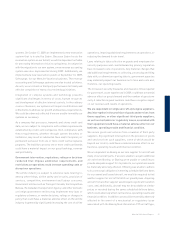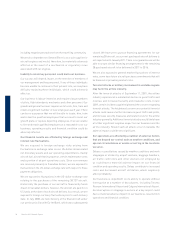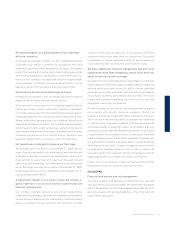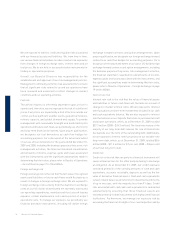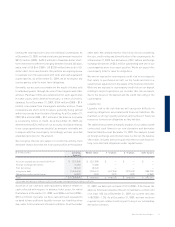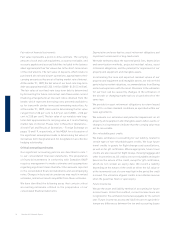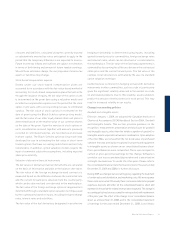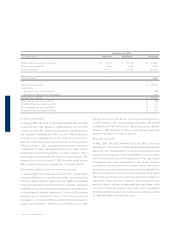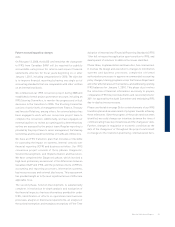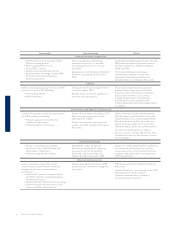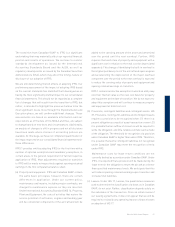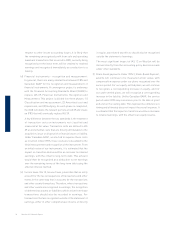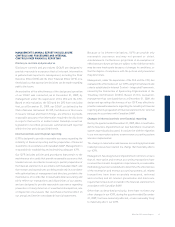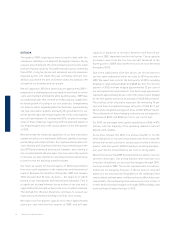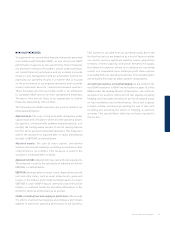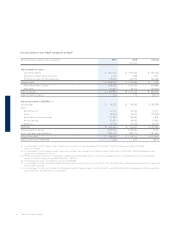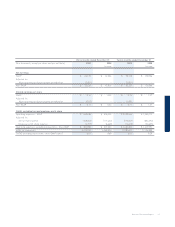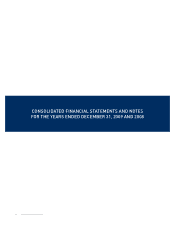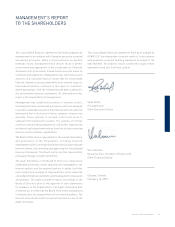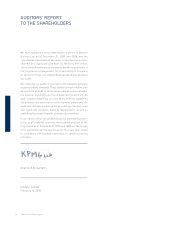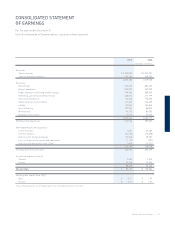Westjet 2009 Annual Report Download - page 67
Download and view the complete annual report
Please find page 67 of the 2009 Westjet annual report below. You can navigate through the pages in the report by either clicking on the pages listed below, or by using the keyword search tool below to find specific information within the annual report.
WestJet 2009 Annual Report 37
added to the carrying amount of the asset and amortized
over the period until the next overhaul. Further, IFRS
requires that each item of property and equipment with a
signifi cant cost in relation to the total cost be depreciated
separately. This change of identifying the built-in overhaul in
the original purchase price of the aircraft and spare engines
and accelerating the depreciation of the major overhaul
component over the period to the next overhaul is expected
to reduce the carrying value of property and equipment and
opening retained earnings on transition.
IFRS 1 contains an elective exemption in which an entity may
elect fair market value as the new cost basis for property
and equipment at the date of transition. We do not expect to
adopt this exemption and will continue to measure property
and equipment at historical cost.
(b) Provisions, contingent liabilities and contingent assets: IAS
37, Provisions, Contingent Liabilities and Contingent Assets
requires a provision to be recognized when: (1) there is a
present obligation as a result of a past transaction or event; (2)
it is probable that an outfl ow of resources will be required to
settle the obligation; and (3) a reliable estimate can be made
of the obligation. The threshold for recognition of a provision
under Canadian GAAP is higher than under IFRS. Therefore,
it is possible that some contingent liabilities not recognized
under Canadian GAAP may meet the recognition criteria
under IFRS.
Maintenance costs for lease return conditions are not
currently booked as a provision under Canadian GAAP. Under
IFRS, it is expected that a provision will be made during the
lease term for the obligation to return the aircraft at or better
than specifi ed maintenance levels. We anticipate that this
will reduce opening retained earnings upon transition and
increase total liabilities.
(c) Leases: Under IAS 17, Leases, the quantitative measures
used to determine the classifi cation of a lease, as in Canadian
GAAP, do not exist. Rather, classifi cation depends solely on
the substance of the transaction. From an initial review of
our leasing agreements, it does not appear that we will be
required to reclassify any operating leases to fi nance leases
on adoption of IAS 17.
The transition from Canadian GAAP to IFRS is a significant
undertaking that may materially affect our reported fi nancial
position and results of operations. We continue to monitor
standards development as issued by the International
Accounting Standards Board and the AcSB, as well as
regulatory developments as issued by the Canadian Securities
Administrators (CSA), which may affect the timing, nature or
disclosure of our adoption of IFRS.
We are still determining the full effects of adopting IFRS. Our
preliminary assessment of the impact of adopting IFRS based
on the current standards has identifi ed the following areas as
having the most signifi cant potential impact to our consolidated
fi nancial statements. This should not be regarded as a complete
list of changes that will result from the transition to IFRS, but
rather, is intended to highlight the areas we believe to be the
most signifi cant. As we move through the Implementation and
Execution phase, we will confi rm additional changes. These
assessments are based on available information and our
expectations as of the date of this MD&A and thus, are subject
to change based on new facts and circumstances. Additionally,
an analysis of changes is still in progress and not all decisions
have been made where choices of accounting policies are
available. At this stage, we have not completed quantifi cation of
the impact expected on our consolidated fi nancial statements for
these differences.
IFRS 1 provides entities adopting IFRS for the fi rst time with a
number of optional exemptions and mandatory exceptions, in
certain areas, to the general requirement of full retrospective
application of IFRS. Most adjustments required on transition
to IFRS will be made retrospectively against opening retained
earnings in the fi rst comparative balance sheet.
(a) Property and equipment: IFRS and Canadian GAAP contain
the same basic principles; however, there are certain
differences in application. Under our current policy,
maintenance and repairs, including major overhauls, are
charged to maintenance expense as they are incurred.
Under International Accounting Standard (IAS) 16, Property,
Plant and Equipment, the costs of activities that restore the
service potential of airframes, engines and landing gear
will be considered components of the aircraft and will be


